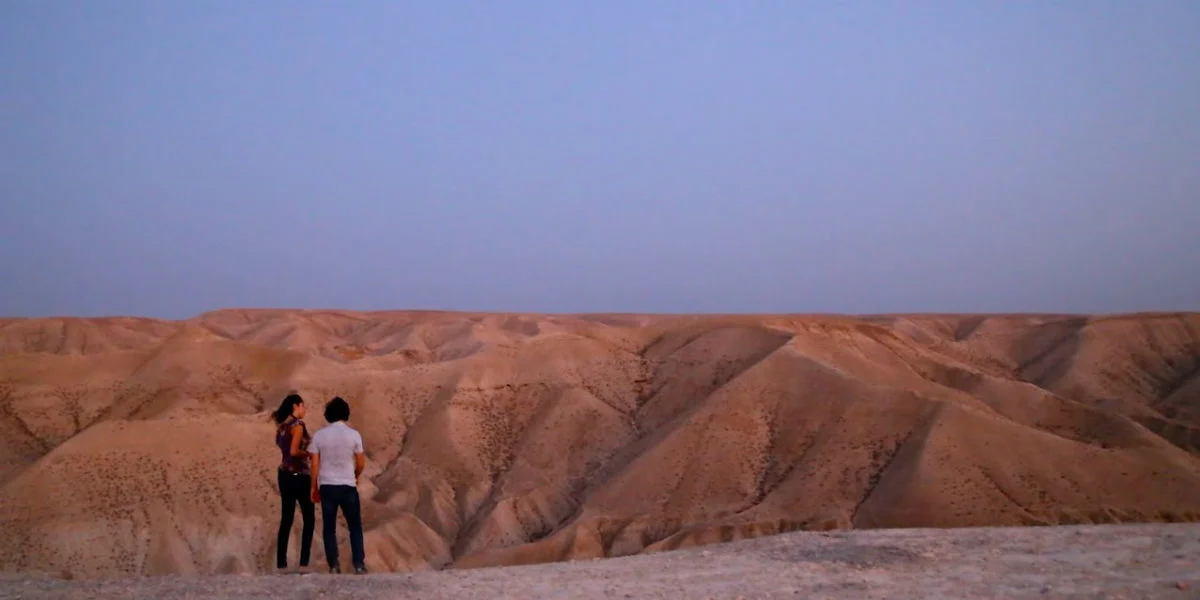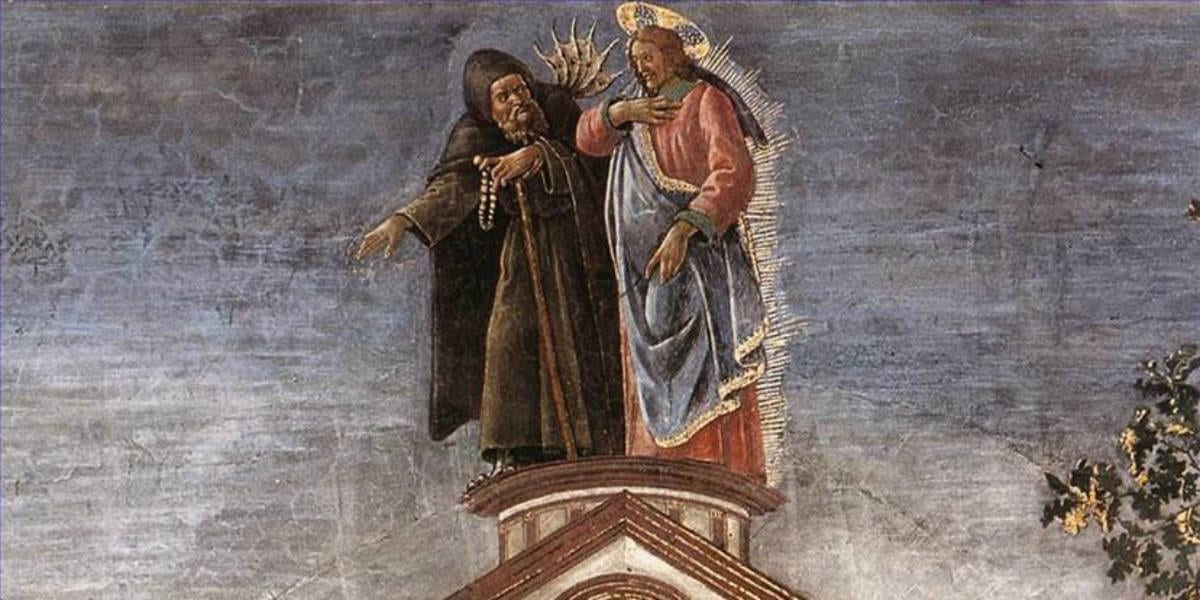Regina Caeli – Queen of Heaven, Rejoice!
The Regina Caeli, Latin for “Queen of Heaven,” is a hymn and prayer ...

This post is also available in: Spanish, Italian
Why Lent has forty days, the meaning of the number 40 in the Old and New Testaments, and the meaning of the fasting and temptation of Jesus Christ in the Desert. For the 1st Sunday of Lent, Cycle C.
In the English language, the special season before Easter is called “Lent.” The word comes from the “lengthening” of daylight hours as we progress from the darkness of winter to the new light of spring. But other languages, such as Spanish, have a name for this season that is derived from the word for forty. It is the season of the forty days.
OK, we do penance for forty days because Jesus fasted forty days in the wilderness. But did you ever wonder why he was out there for forty days rather than seven or ten or fifty?
Think back to the Old Testament. Noah and the passengers in the Ark watched rain fall for 40 days and forty nights. Moses was up on Sinai receiving the 10 commandments for 40 days. The Israelites wandered around the desert for 40 years.
So why all these forties? Probably because it is forty weeks that a woman carries her developing baby before a new life can come forth from the womb.
All these “forties” are a necessary and not-so-comfortable prelude for something new. In Noah’s case, it’s the rebirth of a sinful world that had been cleansed by raging flood waters. In Moses’ case, it was the birth of the people of the covenant. For the nomadic Israelites, it was the start of a new, settled existence in the Promised land.
And Jesus Christ? What did his forty days in the wilderness signify? The imminent birth of a new Israel liberated from sin, reconciled to God, and governed by the law of the Spirit rather than a law chiseled in stone.
But think back to the story of Moses and the Israelites. There was someone who did not want them to go out into the desert to offer sacrifice to their God. Pharaoh did not take the loss of his cheap labor lying down. When Jesus begins his mission of liberation, there is another slave master who is no more willing than Pharaoh to let his minions go without a fight.
Since the sixties, it has been fashionable in some quarters to dismiss the devil as a relic of ancient mythology or medieval fantasy. The guy with the pointy tail and the pitchfork comes in handy in cartoons and costume parties, but how can we take such an image seriously? In the Bible, they say, let’s read “Satan” merely as a symbol of human evil.
Such a view is clearly at odds with Scripture, Tradition, and recent teaching of the Magisterium. Our battle is not against flesh and blood, says St. Paul. If you don’t know your enemy and his tactics, you are bound to lose.
The temptation of Christ in the desert shows us the tactics of the “Dark Lord.” Bread, a symbol for all that sustains our physical life, is a great blessing. But Satan tries to make material things the ultimate, distracting us from a deeper hunger and a more enduring food.
Political power and all leadership is intended by God for the sake of serving the common good; Satan twists things to make leaders self-seeking, oppressive tyrants like himself. The lust for power and fame ironically leads not to dominion but to slavery to the Dark Lord (remember what happened to the Nazghoul in the Lord of the Rings).
Then there’s religious temptation, the trickiest of them all– Manipulating God for our own glory, using his gifts to make people look at us rather than at Him. Sounds a lot like the Pharisees.

Jesus triumphs in this first wrestling match. He shows us how to keep from being pinned. Fasting breaks undue attachments to material blessings and stimulates our spiritual appetite. Humble service breaks the stranglehold of pride. The reverent worship of authentic faith breaks the full nelson of superstition, magic, and all arrogant religion. And the word of God is shown as the sword of the Spirit, the secret weapon that slashes through the enemy’s lies.
So our forty days? Time to use the tactics modeled by our captain and break the strongholds. Prayer, fasting, humble service. The heavenly bread of the Eucharist and the Word of God. If we make use of them diligently during this season, pregnant with possibilities, we can enter into greater freedom. Darkness can give way to increasing light. Something new and wonderful can be born in us.
For practical tips from Dr. Italy on making this Lent your best ever, read his post 40 FRESH IDEAS TO GET THE MOST OUT OF THE LENTEN SEASON
This post on why lent has forty days and the temptation of Jesus Christ is offered as a reflection on the readings for the scripture readings for the First 1st Sunday of Lent, cycle C (Deuteronomy 26:4-10; Psalm 91; Romans 10:8-13; Luke 4:1-13) which deal with the temptation of Jesus Christ in the desert.
For more great ideas for the Lenten Season, see the 40 DAYS OF LENT section of the Crossroads Initiative Library.
For a good summary of the biblical support for the Lenten Season, read Dave Armstrong’ post The Biblical Background for the Practice of Asceticism and the Season of Lent
Banner/featured image of the Judean desert wilderness by David Twellman. Used with permission. All rights reserved. Additional image by Zeina Kassem on Scopio. Used with permission.
Guy I.
Posted at 11:53h, 25 FebruaryGreat article, I like the analogy wrestling with evil, and Jesus, our captain, leading by example. Our 40 day journey is just beginning.
God is good ~
Dr. Marcellino D'Ambrosio
Posted at 11:52h, 30 MarchGod is good all the time! God bless!
Danny Noble
Posted at 07:59h, 10 AprilBrilliant easy to understand true reflection.
Linda Kuehl
Posted at 11:06h, 02 MarchDr D’Ambrosio, Where can I find listed on-line the readings for all three cycles: A, B & C? I would like to show my fundamentalist brother who says Catholics don’t read the Bible that most of the Bible is covered in these 3 years of readings. Thanks a bunch!
Linda Kuehl MASL (former student from IRPS U/D)
.
Linu Mathew Philip
Posted at 09:29h, 27 MarchAmazing inspiring message